Allergic to ginseng. Ginseng Allergy: Understanding Symptoms, Diagnosis, and Management
What are the symptoms of ginseng allergy. How is ginseng allergy diagnosed. What are the treatment options for ginseng allergy. Can children develop allergies to ginseng. What are the differences between American and Korean ginseng allergies.
What is Ginseng and Why is it Popular?
Ginseng is a perennial herb that has been used in traditional Chinese medicine for centuries. In recent years, it has gained worldwide popularity due to its purported health benefits. There are two main species of ginseng:
- Panax ginseng (Korean or Asian ginseng)
- Panax quinquefolius (American ginseng)
Ginseng contains over 40 active ingredients, with the most important being triterpene glycosides, also known as saponins or ginsenosides. These compounds are believed to be responsible for many of ginseng’s medicinal properties.
Why has ginseng become so popular globally? Some of the proposed health benefits include:
- Improved cognitive function
- Better glycemic control
- Pain relief
- Stress reduction
- Enhanced immune function
It’s important to note that while many people use ginseng for these purposes, scientific evidence supporting these benefits varies, and more research is needed to fully understand ginseng’s effects on human health.

Can Ginseng Cause Allergic Reactions?
While ginseng is generally considered safe for most people, it can cause allergic reactions in some individuals. Until recently, reported cases of ginseng allergy were limited to Korean ginseng and adult patients. However, new evidence suggests that American ginseng can also trigger allergic responses, even in children.
What types of allergic reactions can ginseng cause? Reported cases include:
- Anaphylaxis
- Occupational asthma
- Allergic rhinoconjunctivitis
- Urticaria (hives)
It’s crucial to recognize that allergic reactions to ginseng can range from mild to severe and potentially life-threatening, as in the case of anaphylaxis.
First Reported Cases of American Ginseng Allergy in Children
A groundbreaking case report published in Allergy, Asthma & Clinical Immunology in 2018 described the first known cases of American ginseng allergy in pediatric patients. This report highlights two unique cases that expand our understanding of ginseng allergies.
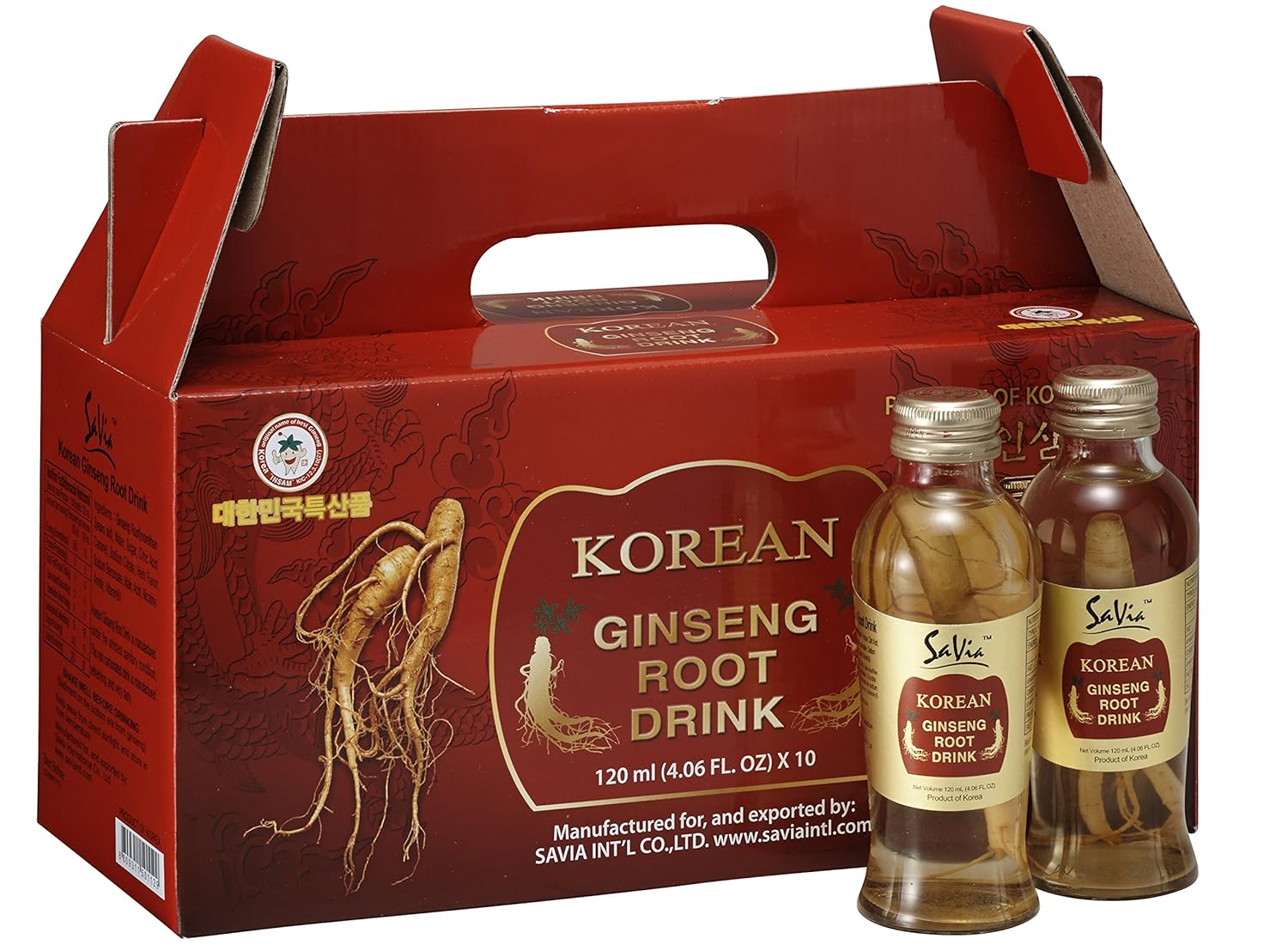
Case 1: Ginseng-Induced Anaphylaxis
The first case involved a 6-year-old girl with a history of multiple food allergies, atopic dermatitis, and asthma. She experienced anaphylaxis after inhaling powdered American ginseng in a store. Her symptoms included:
- Urticaria (hives) on her chest
- Coughing
- Wheezing
- Increased work of breathing
This case is particularly significant as it represents the first reported instance of anaphylaxis triggered by American ginseng in a pediatric patient.
Case 2: Recurrent Allergic Conjunctivitis
The second case involved a 3-year-old boy who developed recurrent allergic conjunctivitis upon exposure to aerosolized powdered ginseng. This case demonstrates that ginseng allergies can manifest in various ways and affect different organ systems.
These cases are noteworthy for several reasons:
- They are the first reported cases of allergy to American ginseng.
- They are the first reported cases of ginseng allergy in pediatric patients.
- They demonstrate different allergic responses to the same substance.
How is Ginseng Allergy Diagnosed?
Diagnosing ginseng allergy can be challenging, especially given its rarity. However, several methods can be used to confirm a suspected ginseng allergy:

Skin Prick Testing (SPT)
Skin prick testing is a common method for diagnosing allergies. In both cases reported, the children showed positive reactions to American ginseng on SPT:
- The 6-year-old girl had a 13 × 12 mm wheal
- The 3-year-old boy had a 13 × 7 mm wheal
These results indicate sensitization to American ginseng in both patients.
Basophil Activation Testing
For the 6-year-old girl, basophil activation testing was performed. This test showed a dose-dependent increase in expression of CD63 on basophils in response to American ginseng extract, providing further evidence of an IgE-mediated allergic reaction.
Oral Challenge
An oral challenge can be used to confirm or rule out an allergy. In the case of the 3-year-old boy, an oral challenge with American ginseng powder was performed. Interestingly, he showed no evidence of an IgE-mediated allergic reaction during this challenge, despite his history of symptoms and positive SPT.
This discrepancy highlights the complexity of diagnosing ginseng allergies and the importance of considering multiple diagnostic methods.
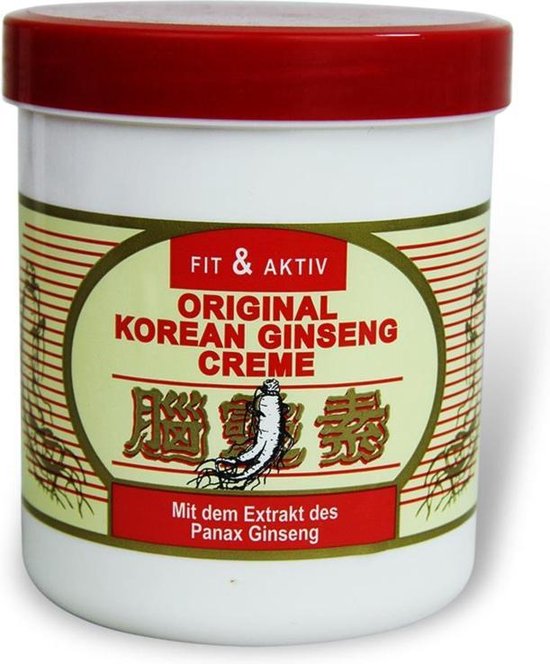
What are the Differences Between American and Korean Ginseng Allergies?
While both American and Korean ginseng can cause allergic reactions, there are some notable differences:
- Reported cases: Prior to these pediatric cases, allergic reactions had only been reported with Korean ginseng.
- Ginsenoside composition: American and Korean ginseng have distinctive distributions of ginsenosides, which may account for differences in their allergenic potential.
- Proposed medicinal effects: The differing ginsenoside profiles are thought to result in varying medicinal properties between the two species.
Despite these differences, it’s important to note that individuals allergic to one type of ginseng may be at risk for cross-reactivity with other ginseng species. Therefore, caution is advised when using any ginseng product if an allergy is suspected.
How is Ginseng Allergy Treated?
Treatment for ginseng allergy depends on the severity of the reaction. In the case of anaphylaxis, prompt emergency treatment is crucial. The 6-year-old girl in the case report was treated with:

- Salbutamol (a bronchodilator)
- Dexamethasone (a corticosteroid)
- Diphenhydramine (an antihistamine)
For less severe reactions, treatment may include:
- Antihistamines for mild symptoms like hives or itching
- Topical corticosteroids for skin reactions
- Inhaled bronchodilators for respiratory symptoms
The most important aspect of managing ginseng allergy is avoidance. Patients diagnosed with ginseng allergy should be educated about potential sources of exposure and how to read product labels carefully.
What are the Implications of These Pediatric Ginseng Allergy Cases?
The discovery of American ginseng allergy in children has several important implications:
- Increased awareness: Healthcare providers should be aware that ginseng can cause allergic reactions, even in children.
- Diagnostic considerations: Ginseng should be considered as a potential allergen in cases of unexplained allergic reactions, particularly in areas where ginseng use is common.
- Product labeling: There may be a need for improved labeling of products containing ginseng to protect allergic individuals.
- Further research: These cases highlight the need for more research into the prevalence, mechanisms, and management of ginseng allergies.
How common are ginseng allergies in children? While these cases are the first reported, it’s possible that ginseng allergies in children have been underrecognized or misdiagnosed in the past. As awareness increases, we may see more cases identified in the future.

Can Ginseng Allergies Be Prevented?
Preventing ginseng allergies can be challenging, especially given the increasing popularity of ginseng products. However, some strategies may help reduce the risk:
- Cautious introduction: If considering using ginseng, start with small amounts and monitor for any adverse reactions.
- Awareness of family history: Individuals with a family history of allergies may be at higher risk and should exercise extra caution.
- Reading labels: Always check product labels for ginseng or its derivatives, especially in herbal supplements and traditional medicines.
- Occupational safety: Workers in environments where ginseng is processed should use appropriate protective equipment to minimize exposure.
It’s important to note that while these strategies may help, they cannot guarantee prevention of ginseng allergies. Some individuals may develop allergies even with cautious use.
The Role of Cross-Reactivity in Ginseng Allergies
Cross-reactivity occurs when the immune system mistakes one substance for another due to similar protein structures. In the context of ginseng allergies, several questions arise:
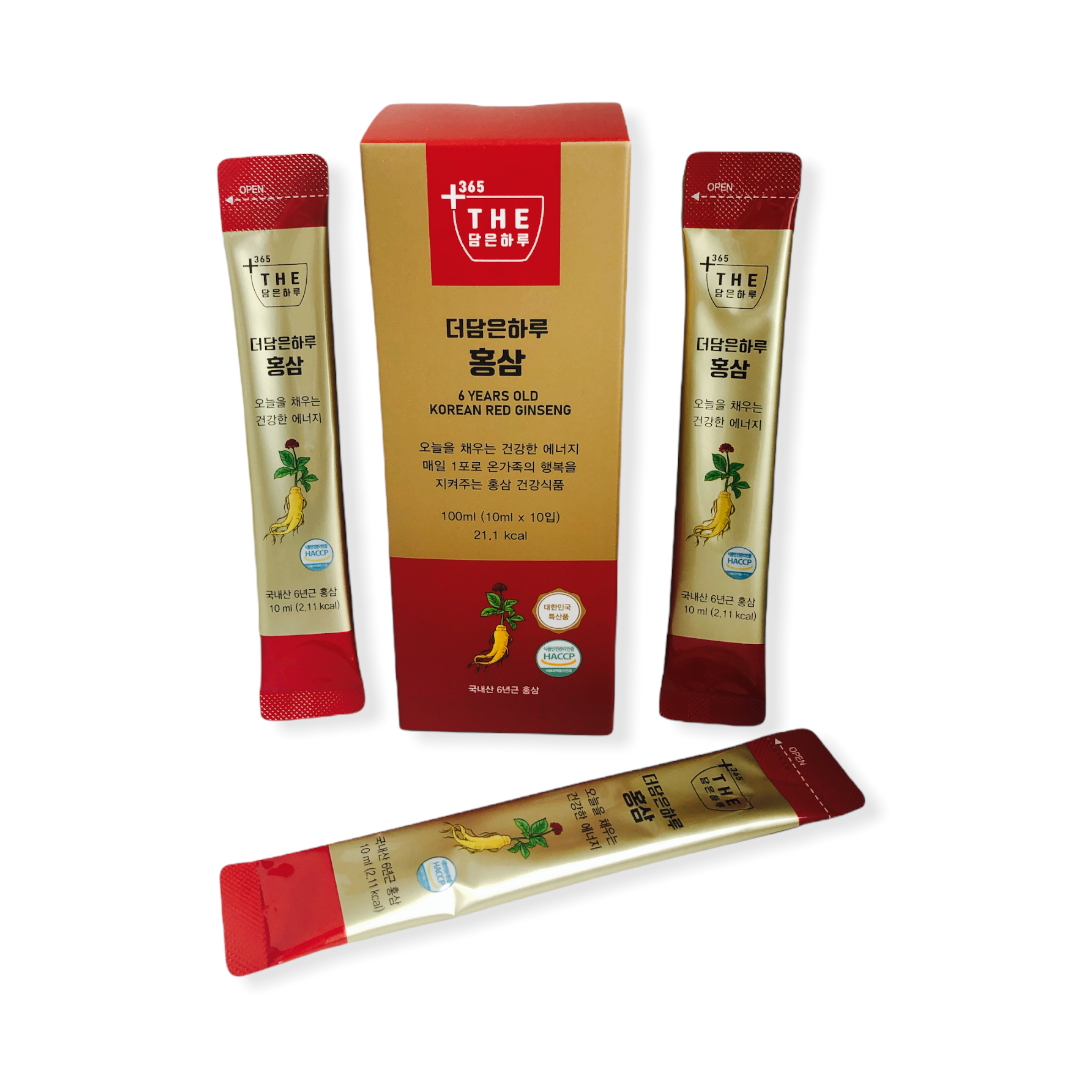
- Can individuals allergic to one type of ginseng react to other types?
- Is there potential cross-reactivity between ginseng and other plants in the Araliaceae family?
- Could ginseng allergy be related to other pollen-food allergy syndromes?
While research in this area is limited, it’s prudent for individuals with known ginseng allergies to be cautious with related plants and to discuss potential risks with their healthcare provider.
The Impact of Processing on Ginseng Allergenicity
Ginseng is available in various forms, including raw roots, powders, extracts, and processed products. An important question is whether processing methods affect the allergenicity of ginseng. Consider the following:
- Does heat treatment reduce allergenicity?
- Are certain extraction methods more likely to preserve allergenic proteins?
- Could fermentation or other processing techniques introduce new allergens?
These questions highlight the need for further research to understand how different forms of ginseng may impact allergic individuals.

Future Directions in Ginseng Allergy Research
The discovery of pediatric ginseng allergies opens up several avenues for future research:
- Prevalence studies: Large-scale studies to determine the true prevalence of ginseng allergies in both children and adults.
- Allergen characterization: Identification and characterization of specific allergenic proteins in ginseng.
- Cross-reactivity studies: Investigation of potential cross-reactivity between different ginseng species and related plants.
- Diagnostic tools: Development of standardized diagnostic tests for ginseng allergy.
- Treatment options: Exploration of potential desensitization or immunotherapy approaches for ginseng allergy.
What role might molecular allergology play in advancing our understanding of ginseng allergies? This field, which focuses on identifying and characterizing specific allergenic molecules, could provide valuable insights into the mechanisms of ginseng allergy and potentially lead to more precise diagnostic and treatment methods.
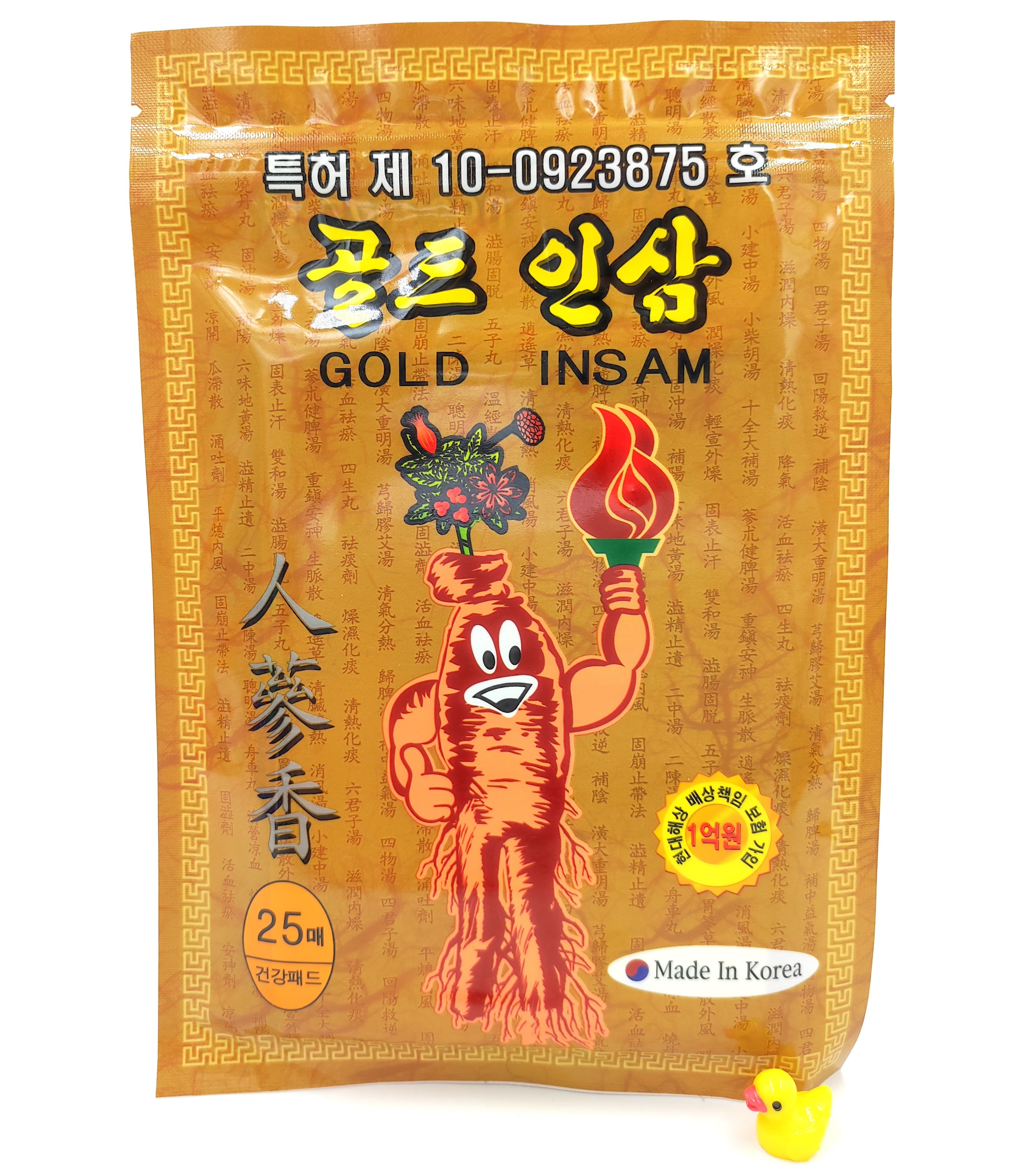
The Potential for Ginseng Allergy in Occupational Settings
As the ginseng industry grows, occupational exposure becomes an important consideration. Workers involved in ginseng cultivation, processing, and product manufacturing may be at increased risk of developing allergies due to repeated exposure. Key questions in this area include:
- What is the prevalence of ginseng allergy among workers in the ginseng industry?
- Are certain processing activities associated with a higher risk of sensitization?
- What protective measures are most effective in preventing occupational ginseng allergies?
Addressing these questions could lead to improved occupational health guidelines and practices in the ginseng industry.
The Role of Ginseng in Traditional Medicine Systems
Ginseng has been a cornerstone of traditional medicine systems, particularly in East Asia, for thousands of years. The emergence of ginseng allergies raises important questions about the intersection of traditional practices and modern allergy science:
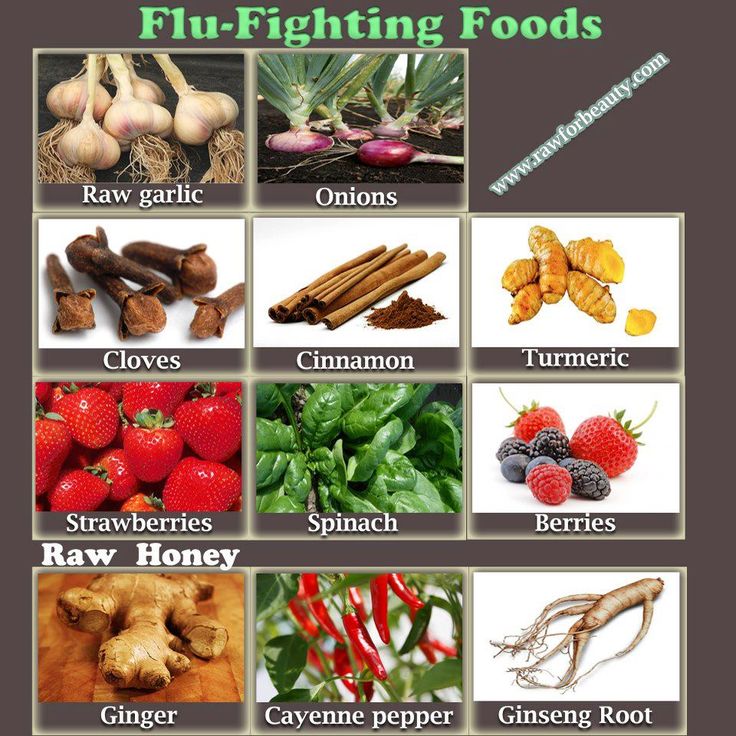
- How do traditional medicine practitioners approach the concept of ginseng allergy?
- Are there traditional methods for identifying or managing ginseng sensitivities?
- How can modern allergy science be integrated with traditional knowledge to ensure safe use of ginseng in traditional medicine?
Exploring these questions could lead to a more comprehensive understanding of ginseng allergy and potentially uncover valuable insights from traditional medical systems.
Genetic Factors in Ginseng Allergy
As with many allergic conditions, genetic factors may play a role in susceptibility to ginseng allergy. Future research could explore:
- Are there specific genetic variants associated with increased risk of ginseng allergy?
- Do genetic factors influence the type or severity of allergic reactions to ginseng?
- Could genetic testing help identify individuals at high risk for ginseng allergy?
Understanding the genetic basis of ginseng allergy could potentially lead to more personalized approaches to prevention and management.
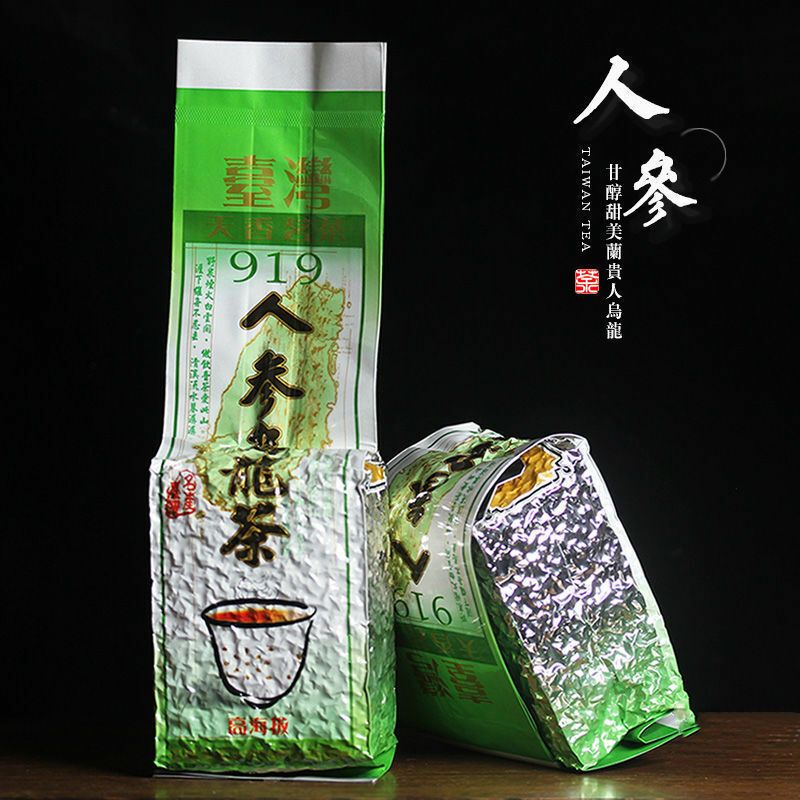
The Impact of Climate Change on Ginseng Allergenicity
As global climate patterns shift, there may be implications for the growth and composition of ginseng plants. This raises several questions:
- Could changing environmental conditions alter the allergen content of ginseng plants?
- Might new growing regions for ginseng lead to changes in its allergenic profile?
- How might climate-induced stress on ginseng plants affect their potential to cause allergies?
Investigating these questions could provide valuable insights into how climate change may impact the prevalence and nature of ginseng allergies in the future.
Conclusion: The Evolving Landscape of Ginseng Allergy
The discovery of American ginseng allergy in pediatric patients marks a significant milestone in our understanding of ginseng-related health risks. These cases challenge previous assumptions about the allergenicity of different ginseng species and highlight the need for increased awareness among healthcare providers, particularly when treating children.

As ginseng continues to gain popularity worldwide, it’s crucial that we expand our knowledge of its potential allergenic properties. This includes developing better diagnostic tools, understanding risk factors, and establishing effective management strategies for those affected by ginseng allergies.
Future research in this area has the potential to not only improve the care of individuals with ginseng allergies but also to provide broader insights into plant-based allergies and the complex interactions between traditional herbal medicines and the human immune system.
Ultimately, a balanced approach that respects the traditional uses of ginseng while incorporating modern scientific understanding will be key to maximizing the benefits of this ancient herb while minimizing potential risks.
First-reported pediatric cases of American ginseng anaphylaxis and allergy | Allergy, Asthma & Clinical Immunology
- Case report
- Open Access
- Published:
- Stephanie C. Erdle1,
- Edmond S. Chan1,
- Hyungjun Yang1,2,
- Bruce A. Vallance2,
- Christopher Mill1 &
- …
- Tiffany Wong1
Allergy, Asthma & Clinical Immunology
volume 14, Article number: 79 (2018)
Cite this article
3733 Accesses
5 Citations
12 Altmetric
Metrics details
Abstract
Background
Ginseng is a perennial herb used in traditional Chinese medicine, which has become increasingly popular world-wide due to its proposed medicinal effects. There are two major species of ginseng, Panax ginseng (Korean or Asian ginseng), and Panax quinquefolius (American ginseng). Although cases of allergy due to Korean ginseng have been reported in adults, there are no reported cases of allergy to American ginseng, and no reported cases of ginseng allergy in pediatric patients.
There are two major species of ginseng, Panax ginseng (Korean or Asian ginseng), and Panax quinquefolius (American ginseng). Although cases of allergy due to Korean ginseng have been reported in adults, there are no reported cases of allergy to American ginseng, and no reported cases of ginseng allergy in pediatric patients.
Case presentation
We present two unique cases of pediatric patients with suspected allergic reactions to American ginseng. The first patient is a 6-year-old girl who presented to the emergency department in anaphylaxis (urticaria and respiratory symptoms) minutes after inhaling powdered American ginseng. There was evidence of sensitization to American ginseng on skin prick testing (SPT) (13 × 12 mm wheal) and evidence of allergy to American ginseng on basophil activation testing, with a dose-dependent increase in expression of CD63 on basophils in response to American ginseng extract. The second patient is a 3-year-old boy who presented with recurrent allergic conjunctivitis upon exposure to aerosolized powdered ginseng, with evidence of sensitization to American ginseng on SPT (13 × 7 mm wheal), but with no evidence of IgE-mediated allergic reaction during oral challenge with American ginseng powder.
Conclusions
These cases highlight two different allergic responses to American ginseng in pediatric patients. To our knowledge, these are the first reported cases of allergy to American ginseng, in addition to the first reported cases of allergy to ginseng in pediatric patients.
Background
Ginseng is a perennial herb used in traditional Chinese medicine, which has become increasingly popular world-wide due to its proposed medicinal effects, including improved cerebral function, glycemic control, pain relief, stress reduction, and many others [1,2,3]. There are two major species of ginseng, Panax ginseng (Korean or Asian ginseng), and Panax quinquefolius (American ginseng) [1]. Approximately 40 active ingredients have been identified in ginseng, but the pharmacological properties are attributed to their triterpene glycosides, also known as saponins or ginsenosides [3]. American and Korean ginseng have distinctive distributions of ginsenosides, which are thought to account for their differing proposed medicinal effects [3]. Cases of anaphylaxis, occupational asthma and allergic rhinoconjunctivitis due to Korean ginseng have been reported in Korean adults [4,5,6,7,8]. In contrast, there are no reported cases of allergy against American ginseng, or reported cases of ginseng allergy in pediatric patients. We present two unique cases of pediatric patients presenting with suspected allergy to American ginseng.
Cases of anaphylaxis, occupational asthma and allergic rhinoconjunctivitis due to Korean ginseng have been reported in Korean adults [4,5,6,7,8]. In contrast, there are no reported cases of allergy against American ginseng, or reported cases of ginseng allergy in pediatric patients. We present two unique cases of pediatric patients presenting with suspected allergy to American ginseng.
Case presentations
Patient 1: Ginseng-induced anaphylaxis
A 6-year-old girl with a history of multiple IgE-mediated food allergies, atopic dermatitis, and a remote history of asthma presented to the emergency department with urticaria, coughing, and wheezing. Symptoms began minutes after entering a ginseng store that was selling powdered American ginseng products. She did not have any respiratory symptoms or ingest anything prior to entering the store. Parents suspected she inhaled some powdered ginseng. This was her first known exposure to ginseng. On physical examination, she was afebrile with normal blood pressure for age. Respiratory examination confirmed increased work of breathing and decreased air entry with wheezing bilaterally. On dermatologic examination, she had urticaria on her chest. She was treated in the emergency department with salbutamol, dexamethasone and diphenhydramine. Symptoms resolved shortly after treatment, and the patient was referred to our Allergy Clinic.
Respiratory examination confirmed increased work of breathing and decreased air entry with wheezing bilaterally. On dermatologic examination, she had urticaria on her chest. She was treated in the emergency department with salbutamol, dexamethasone and diphenhydramine. Symptoms resolved shortly after treatment, and the patient was referred to our Allergy Clinic.
In the Allergy Clinic, parents provided a history of wheezing with viral infections between ages two and four, with intermittent inhaled corticosteroid and salbutamol use. There had been no exacerbation of respiratory symptoms in over a year. She had confirmed food allergies to peanuts, tree nuts and fish, and had outgrown egg and wheat allergies. She was found to be sensitized to tree pollen.
Skin prick testing (SPT) with American ginseng powder dissolved in water was positive with a 13 × 12 mm wheal. Spirometry was normal (FEV1 107% predicted). The family declined an oral challenge to ginseng, given the severity of her initial reaction. Basophil activation test (BAT) showed a dose-dependent increase in expression of CD63 on basophils in response to American ginseng extract, but not Korean ginseng extract (Fig. 1). No changes were observed in a non-atopic control, and minimal changes were observed in an atopic control that was tested with American ginseng extract.
Basophil activation test (BAT) showed a dose-dependent increase in expression of CD63 on basophils in response to American ginseng extract, but not Korean ginseng extract (Fig. 1). No changes were observed in a non-atopic control, and minimal changes were observed in an atopic control that was tested with American ginseng extract.
Fig. 1
Expression of CD63 on basophils in Patient 1, an atopic control, and a non-atopic control, after incubation with American and Korean ginseng
Full size image
It was concluded that this patient had an anaphylactic reaction to American ginseng. She was advised to strictly avoid all ginseng products and carry an epinephrine autoinjector at all times.
Patient 2: Ginseng-induced allergic conjunctivitis
A 3-year-old boy with asthma and atopic dermatitis was referred to our Allergy clinic with a history of recurrent ocular pruritus, tearing, and conjunctivitis. There were no associated nasal or respiratory symptoms.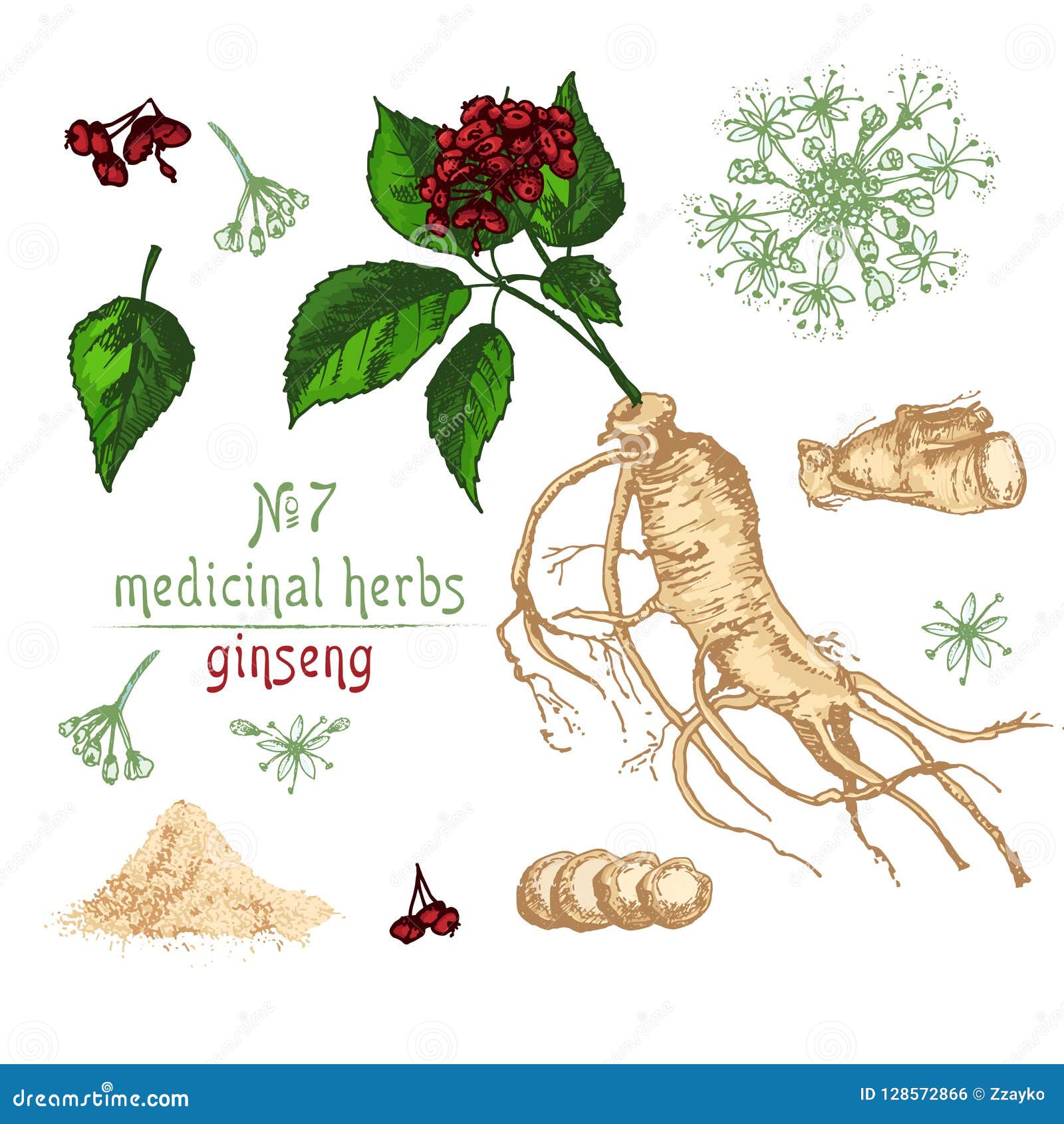 His ocular symptoms consistently occurred minutes after entering his grandparents’ herbal product store, on days when American ginseng was being ground. Symptoms typically resolved within 24 h of leaving the store, and did not occur when other herbs were being ground. There were no other identifiable triggers, and no seasonality to his symptoms. He was regularly ingesting soup boiled with small amounts of ginseng root without adverse reaction.
His ocular symptoms consistently occurred minutes after entering his grandparents’ herbal product store, on days when American ginseng was being ground. Symptoms typically resolved within 24 h of leaving the store, and did not occur when other herbs were being ground. There were no other identifiable triggers, and no seasonality to his symptoms. He was regularly ingesting soup boiled with small amounts of ginseng root without adverse reaction.
SPT with American ginseng powder dissolved in water was positive with a 13 × 7 mm wheal. SPT to common environmental aeroallergens was positive for dust mite. The family declined BAT due to needle phobia. An oral challenge was performed using American ginseng powder. Parents were asked to bring in 50 g of powdered ginseng [5], however, only brought in 3 g as they felt this quantity was too large. The powder was mixed with water, and ingested in increasing quantities. Parents stopped the challenge at 2 g, stating this was the maximum they would ever use in soup.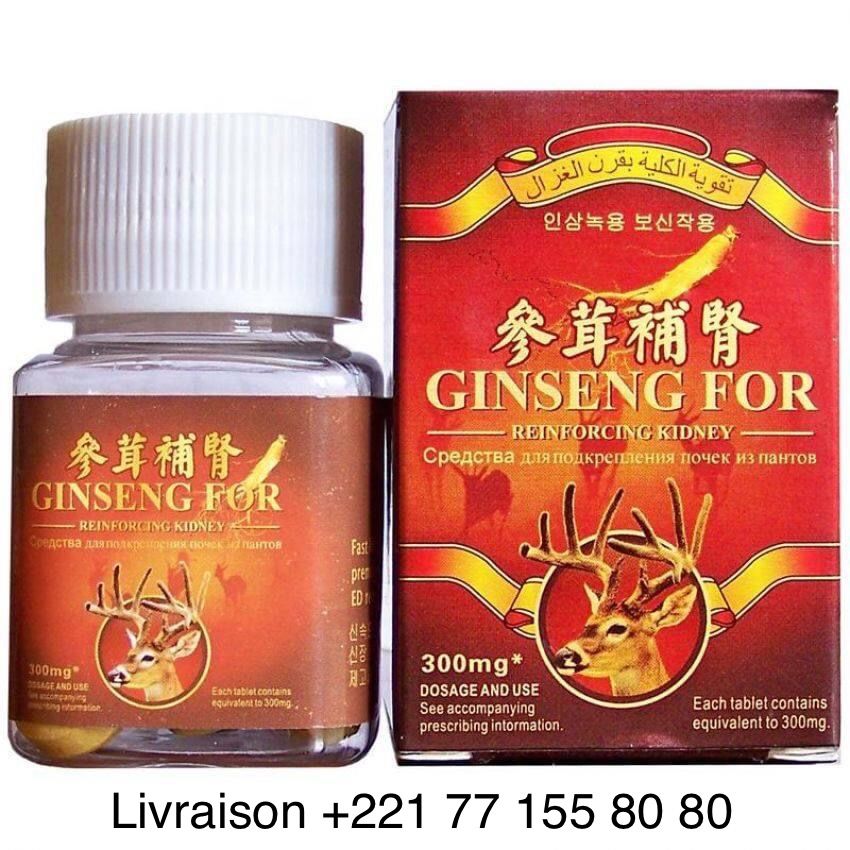 He was monitored for 1 h following the challenge, and did not develop any signs of IgE-mediated allergy. The family was advised that it was likely safe for him to continue ingesting small amounts of ginseng in soup, but to avoid the grandparents’ store as much as possible, particularly on days when ginseng was being ground. He was given a prescription for olopatadine 0.1% eye drops for ocular symptoms as needed.
He was monitored for 1 h following the challenge, and did not develop any signs of IgE-mediated allergy. The family was advised that it was likely safe for him to continue ingesting small amounts of ginseng in soup, but to avoid the grandparents’ store as much as possible, particularly on days when ginseng was being ground. He was given a prescription for olopatadine 0.1% eye drops for ocular symptoms as needed.
Discussion and conclusion
Patient 1 presented in anaphylaxis, with physician-confirmed respiratory symptoms and urticaria. There was no recent history of viral infection or poor asthma control, and spirometry was normal, indicating that this presentation was unlikely to be an asthma exacerbation. There was evidence of sensitization to ginseng on SPT, and allergy on BAT. This is the first reported case of anaphylaxis to American ginseng. In addition, ginseng anaphylaxis has never been reported in a pediatric patient.
Patient 2 represents a unique case of allergic conjunctivitis on contact with aerosolized American ginseng powder. Interestingly, although his SPT was positive, suggesting an IgE-mediated response, he was able to tolerate the ingestion of small amounts of ginseng without the development of allergic symptoms. Kim et al. reported a similar entity in an adult patient who experienced recurrent rhinitis upon exposure to aerosolized ginseng with evidence of sensitization on SPT, but who was able to ingest ginseng without adverse reaction [4]. The pathophysiology behind this phenomenon is unclear, but may be related to the dilution effect of the protein and the very small amounts subsequently ingested.
Interestingly, although his SPT was positive, suggesting an IgE-mediated response, he was able to tolerate the ingestion of small amounts of ginseng without the development of allergic symptoms. Kim et al. reported a similar entity in an adult patient who experienced recurrent rhinitis upon exposure to aerosolized ginseng with evidence of sensitization on SPT, but who was able to ingest ginseng without adverse reaction [4]. The pathophysiology behind this phenomenon is unclear, but may be related to the dilution effect of the protein and the very small amounts subsequently ingested.
Serum-specific IgE against American ginseng was not available at our center, but would have likely been more susceptible to false negatives than SPT with actual American ginseng.
These cases highlight two different allergic responses to American ginseng in pediatric patients; one with anaphylaxis, and the other with allergic conjunctivitis. As ginseng use and exposure is becoming increasingly prevalent world-wide, it is important to consider ginseng as a cause of anaphylaxis or allergic presentation in children. Further studies investigating the mechanism underlying the varied allergic presentations in response to ginseng would be valuable. In addition, the establishment of a standardized workup for the diagnosis of ginseng allergy would be beneficial.
Further studies investigating the mechanism underlying the varied allergic presentations in response to ginseng would be valuable. In addition, the establishment of a standardized workup for the diagnosis of ginseng allergy would be beneficial.
Abbreviations
- BAT:
basophil activation test
- CD63:
cluster of differentiation 63
- FEV1:
forced expiratory volume
- IgE:
immunoglobulin E
- SPT:
skin prick testing
References
Choi KT. Botanical characteristics, pharmacological effects and medicinal components of Korean Panax ginseng C A Meyer.
 Acta Pharmacol Sin. 2008;29(9):1109–18.
Acta Pharmacol Sin. 2008;29(9):1109–18.Article
CASGoogle Scholar
Shergis JL, Zhang AL, Zhou W, Xue CC. Panax ginseng in randomised controlled trials: a systematic review. Phytother Res. 2013;27(7):949–65.
Article
Google Scholar
Lee NH, Son CG. Systematic review of randomized controlled trials evaluating the efficacy and safety of ginseng. J Acupunct Meridian Stud. 2011;4(2):85–97.
Article
Google Scholar
Kim KM, Swon HS, Jeon SG, Park CH, Sohn SW, Kim DI, et al. Korean ginseng-induced occupational asthma and determination of IgE binding components. J Korean Med Sci. 2008;23(2):232–5.
Article
Google Scholar
Lee JY, Jin HJ, Park JW, Jung SK, Jang JY, Park HS.
 A case of korean ginseng-induced anaphylaxis confirmed by open oral challenge and basophil activation test. Allergy Asthma Immunol Res. 2012;4(2):110–1.
A case of korean ginseng-induced anaphylaxis confirmed by open oral challenge and basophil activation test. Allergy Asthma Immunol Res. 2012;4(2):110–1.Article
Google Scholar
Lim KH, Kang MK, Kim BK, Kim MH, Park HK, Lim JA, et al. A case of anaphylaxis after ingestion of freshginseng. Korean J Asthma Allergy Clin Immunol. 2010;30(2):131–4.
Google Scholar
Eum YW, Hahn Z, Kim MK. A case of anaphylaxis induced by red ginseng. Korean J Asthma Allergy Clin Immunol. 2006;26:151–4.
Google Scholar
Lee JY, Lee YD, Bahn JW, Park HS. A case of occupational asthma and rhinitis caused by Sanyak and Korean ginseng dusts. Allergy. 2006;61(3):392–3.
Article
CASGoogle Scholar
Download references
Authors’ contributions
SE wrote the initial manuscript and edited based on feedback provided by other contributing authors. TW was the primary faculty advisor for the manuscript. EC was also a faculty advisor and provided input for the manuscript. HY and BV contributed laboratory assistance for the basophil activation test and provided Fig. 1. CM facilitated transport of patient/control samples from clinic to the study lab. All authors read and approved the final manuscript.
TW was the primary faculty advisor for the manuscript. EC was also a faculty advisor and provided input for the manuscript. HY and BV contributed laboratory assistance for the basophil activation test and provided Fig. 1. CM facilitated transport of patient/control samples from clinic to the study lab. All authors read and approved the final manuscript.
Acknowledgements
H.Y. was supported by a MITACs fellowship. B.A.V. is the Children with Intestinal and Liver Disorders (CHILD) Foundation Research Chair in Pediatric Gastroenterology.
Competing interests
The authors declare that they have no competing interests.
Availability of data and materials
Not applicable.
Consent for publication
Informed consent for publication was obtained.
Ethics approval and consent to participate
Not applicable.
Funding
BCCH Foundation.
Publisher’s Note
Springer Nature remains neutral with regard to jurisdictional claims in published maps and institutional affiliations.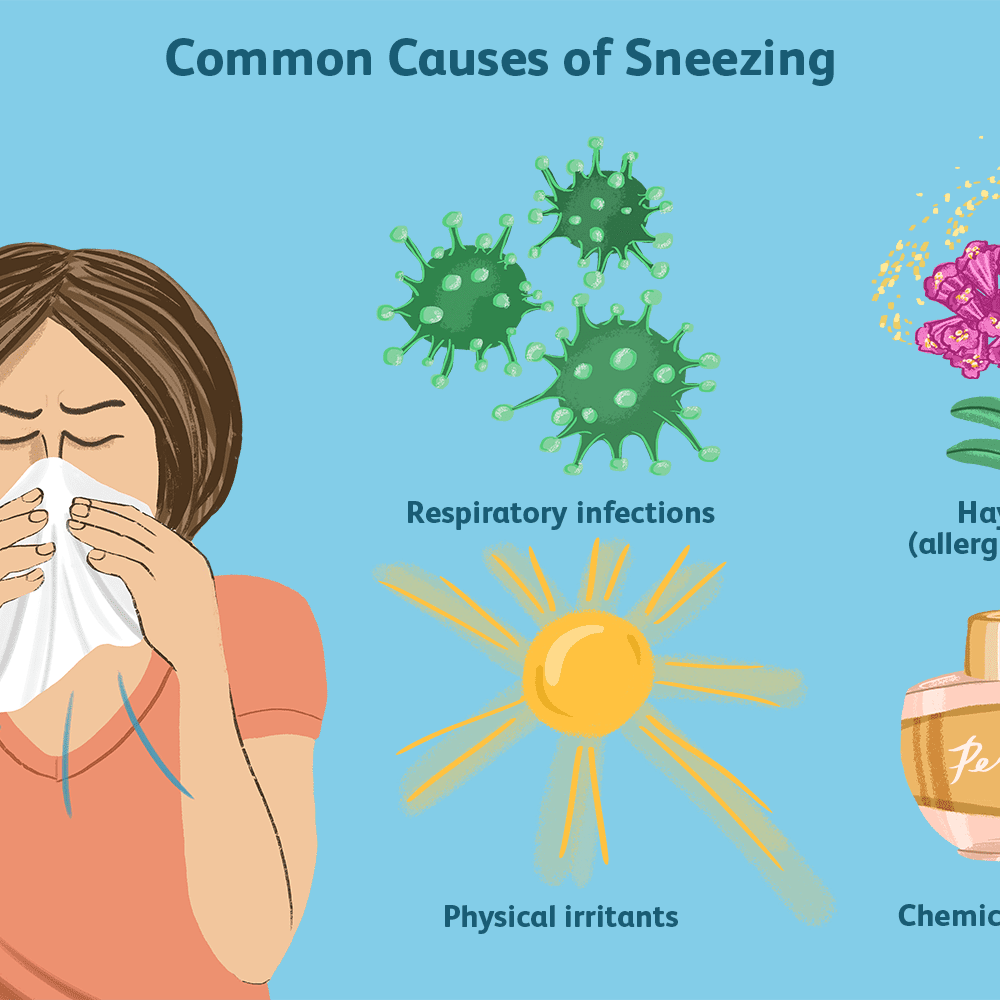
Author information
Authors and Affiliations
Division of Allergy & Immunology, Department of Pediatrics, University of British Columbia, British Columbia Children’s Hospital, 4480 Oak St., Vancouver, BC, V6h4N1, Canada
Stephanie C. Erdle, Edmond S. Chan, Hyungjun Yang, Christopher Mill & Tiffany Wong
Division of Gastroenterology, Department of Pediatrics, British Columbia Children’s Hospital, Vancouver, Canada
Hyungjun Yang & Bruce A. Vallance
Authors
- Stephanie C. Erdle
View author publications
You can also search for this author in
PubMed Google Scholar - Edmond S. Chan
View author publications
You can also search for this author in
PubMed Google Scholar - Hyungjun Yang
View author publications
You can also search for this author in
PubMed Google Scholar - Bruce A. Vallance
View author publications
You can also search for this author in
PubMed Google Scholar - Christopher Mill
View author publications
You can also search for this author in
PubMed Google Scholar - Tiffany Wong
View author publications
You can also search for this author in
PubMed Google Scholar
Corresponding author
Correspondence to
Tiffany Wong.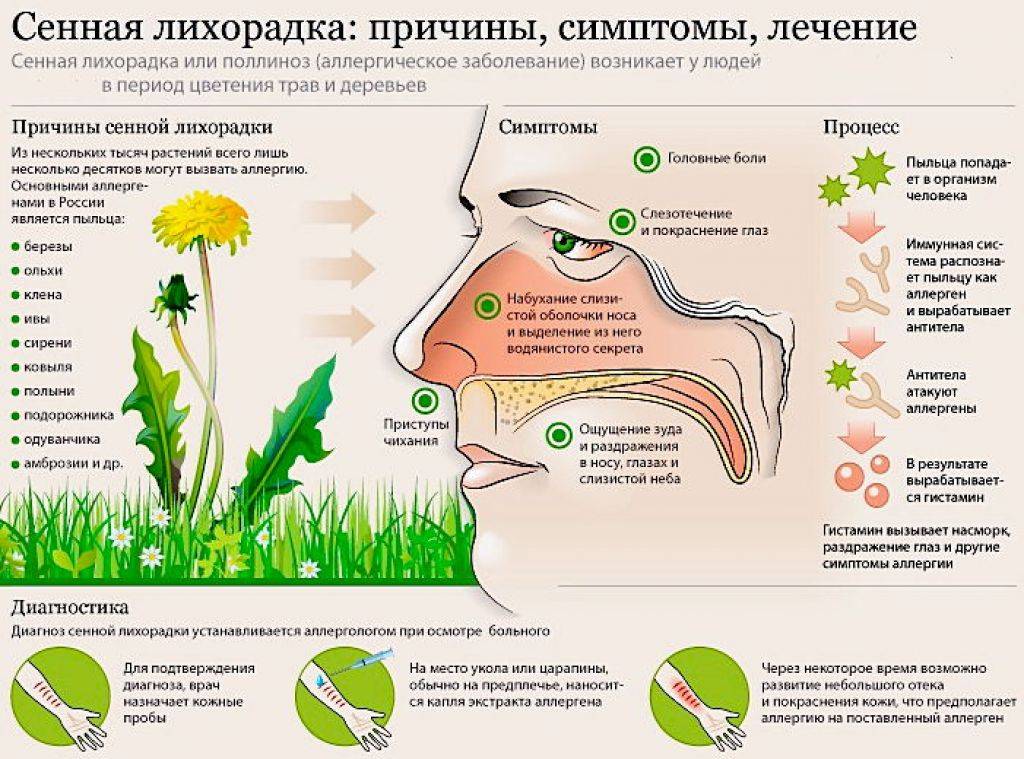
Rights and permissions
Open Access This article is distributed under the terms of the Creative Commons Attribution 4.0 International License (http://creativecommons.org/licenses/by/4.0/), which permits unrestricted use, distribution, and reproduction in any medium, provided you give appropriate credit to the original author(s) and the source, provide a link to the Creative Commons license, and indicate if changes were made. The Creative Commons Public Domain Dedication waiver (http://creativecommons.org/publicdomain/zero/1.0/) applies to the data made available in this article, unless otherwise stated.
Reprints and Permissions
About this article
Korean Ginseng oral: Uses, Side Effects, Interactions, Pictures, Warnings & Dosing
How to use Korean Ginseng
Take this product by mouth as directed. Follow all directions on the product package. Dosage is based on the condition the product is used for and the type of ginseng. If you have any questions, ask your doctor or pharmacist.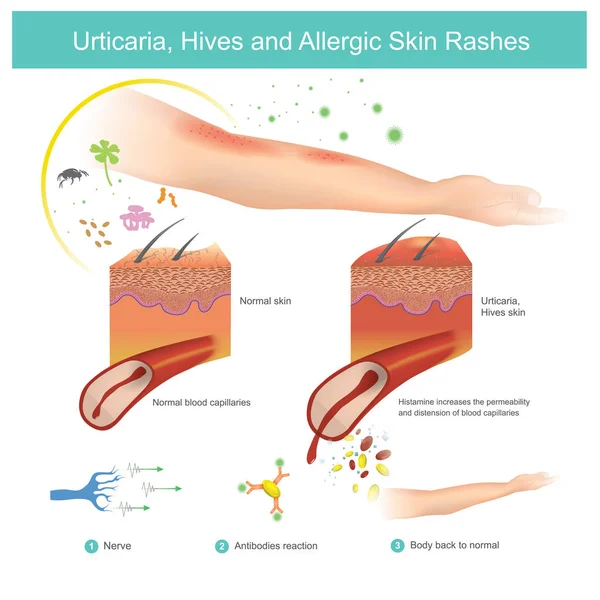
Since ginseng may cause trouble sleeping, do not take it near bedtime.
Ginseng should not be used for long periods. Asian ginseng should not be used for more than 3 months at a time, and Siberian ginseng should not be used for more than 2 months at a time. American ginseng has been used for up to 1 month, although certain extract products have been used for up to 4 months. Ask your doctor or pharmacist for more details about your product and how to use it safely.
If your condition lasts or gets worse, or if you think you may have a serious medical problem, get medical help right away.
Side Effects
Trouble sleeping is the most common side effect. Less common effects include headache, agitation, upset stomach, menstrual problems (such as unusual vaginal bleeding), breast pain, and dizziness. An increase or decrease in blood pressure may also occur. Siberian ginseng may also cause drowsiness, nervousness, or mood changes. If any of these effects last or get worse, tell your doctor or pharmacist promptly.
Tell your doctor right away if you have any serious side effects, including: fast/pounding/irregular heartbeat.
A very serious allergic reaction to this product is rare. However, get medical help right away if you notice any symptoms of a serious allergic reaction, including: rash, itching/swelling (especially of the face/tongue/throat), severe dizziness, trouble breathing.
This is not a complete list of possible side effects. If you notice other effects not listed above, contact your doctor or pharmacist.
In the US – Call your doctor for medical advice about side effects. You may report side effects to FDA at 1-800-FDA-1088 or at www.fda.gov/medwatch.
In Canada – Call your doctor for medical advice about side effects. You may report side effects to Health Canada at 1-866-234-2345.
Precautions
Before taking ginseng, tell your doctor or pharmacist if you are allergic to it; or to any other ingredients listed on the product label; or if you have any other allergies. This product may contain inactive ingredients, which can cause allergic reactions or other problems. Talk to your pharmacist for more details.
This product may contain inactive ingredients, which can cause allergic reactions or other problems. Talk to your pharmacist for more details.
People who are allergic to one type of ginseng should also avoid taking other types.
If you have any of the following health problems, consult your doctor or pharmacist before using this product: high or low blood pressure, heart problems (such as abnormal heart rhythm, rheumatic heart disease), bleeding/clotting problems, a certain mental/mood disorder (schizophrenia), overactive immune system disorders (such as lupus, rheumatoid arthritis, multiple sclerosis), conditions that are affected by estrogen (such as endometriosis, uterine fibroids, cancer of the breast/uterus/ovary).
Ginseng may lower blood sugar levels too much, especially in people with diabetes. Siberian ginseng may lower or raise blood sugar levels. If you have diabetes, monitor your blood sugar more carefully while using this product, and report any unusual results or symptoms to your doctor. Your doctor may need to adjust your diabetes medications.
Your doctor may need to adjust your diabetes medications.
Liquid forms of this product may contain sugar and/or alcohol. Caution is advised if you have diabetes, alcohol dependence, or liver disease. Ask your doctor or pharmacist about using this product safely.
This product may make you dizzy or drowsy. Alcohol or marijuana (cannabis) can make you more dizzy or drowsy. Do not drive, use machinery, or do anything that needs alertness until you can do it safely. Limit alcoholic beverages. Talk to your doctor if you are using marijuana (cannabis).
This product is not recommended for use during pregnancy. Consult your doctor before using this product.
It is unknown if this product passes into breast milk. Consult your doctor before breast-feeding.
Consult your pharmacist or physician.
Interactions
Drug interactions may change how your medications work or increase your risk for serious side effects. This document does not contain all possible drug interactions. Keep a list of all the products you use (including prescription/nonprescription drugs and herbal products) and share it with your doctor and pharmacist. Do not start, stop, or change the dosage of any medicines without your doctor’s approval.
Keep a list of all the products you use (including prescription/nonprescription drugs and herbal products) and share it with your doctor and pharmacist. Do not start, stop, or change the dosage of any medicines without your doctor’s approval.
Some drugs that may interact with this product include: medications/products that may increase your risk of bleeding (including “blood thinners” such as warfarin and heparin, anti-platelet drugs such as clopidogrel, nonsteroidal anti-inflammatory drugs-NSAIDs such as ibuprofen, herbal products such as danshen/garlic/ginger), MAO inhibitors (isocarboxazid, linezolid, metaxalone, methylene blue, moclobemide, phenelzine, procarbazine, rasagiline, safinamide, selegiline, tranylcypromine), drugs that weaken the immune system (including corticosteroids such as prednisone, drugs to prevent organ transplant rejection such as cyclosporine), “water pills” (diuretics such as furosemide, bumetanide), other herbal products (such as fenugreek, willow bark).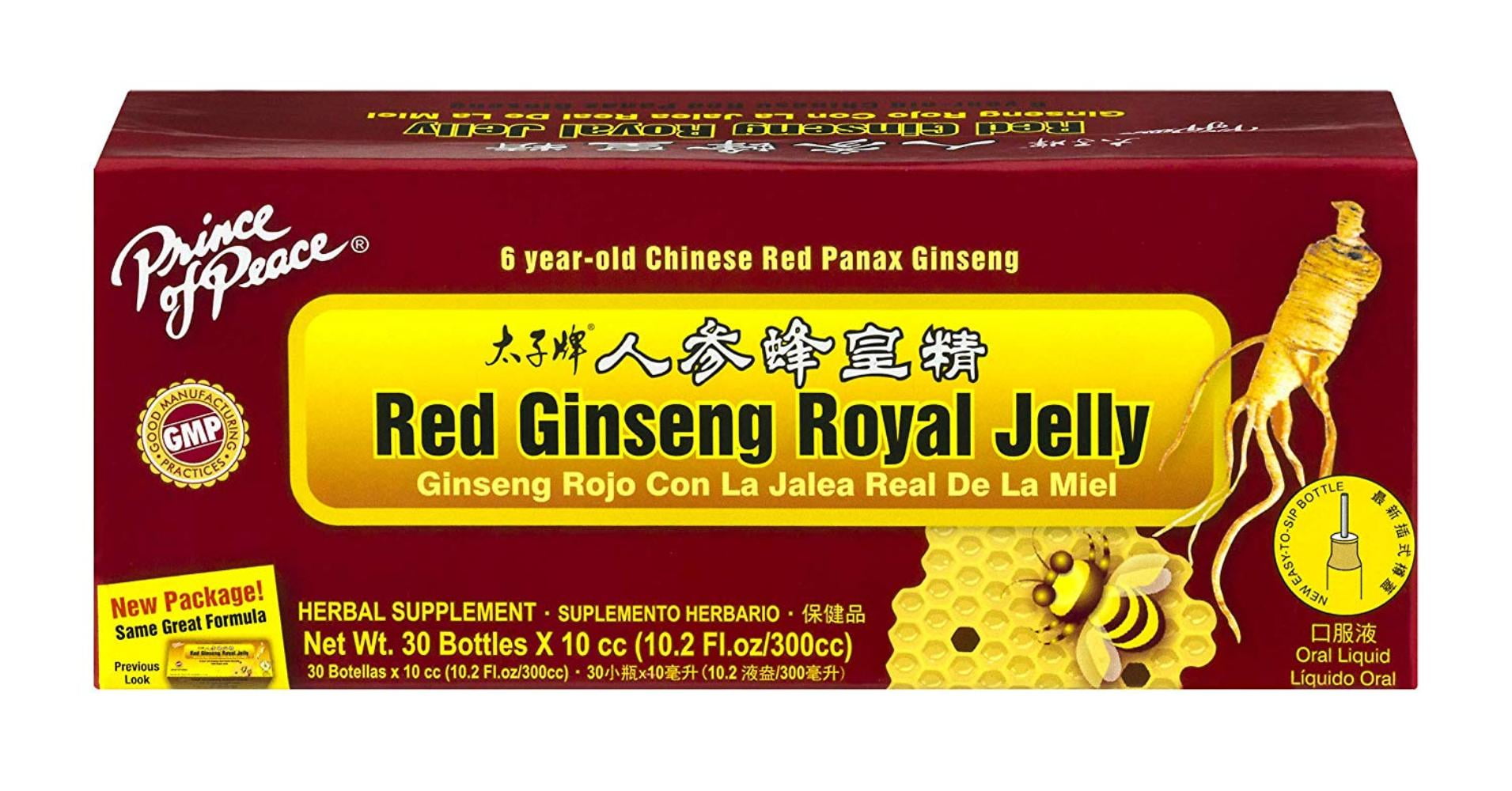
Aspirin may also increase the risk of bleeding when used with this product. If your doctor has prescribed low doses of aspirin to prevent heart attack or stroke (usually 81-162 milligrams a day), you should continue to take the aspirin. Consult your doctor or pharmacist for more details.
Caffeine can increase the side effects of this product. Avoid drinking large amounts of beverages containing caffeine (coffee, tea, certain soft drinks) and eating large amounts of chocolate.
Check the labels on all your medicines (such as cough-and-cold products, diet aids) because they may contain ingredients that could increase the side effects of ginseng. Decongestants (such as pseudoephedrine) and stimulants (such as caffeine, ephedra, ma huang) may worsen trouble sleeping, fast heartbeat, and increased blood pressure. Consult your doctor or pharmacist for more details.
If you are taking Siberian ginseng, tell your doctor or pharmacist if you are taking other products that cause drowsiness such as opioid pain or cough relievers (such as codeine, hydrocodone), alcohol, marijuana (cannabis), drugs for sleep or anxiety (such as alprazolam, lorazepam, zolpidem), muscle relaxants (such as carisoprodol, cyclobenzaprine), or antihistamines (such as cetirizine, diphenhydramine).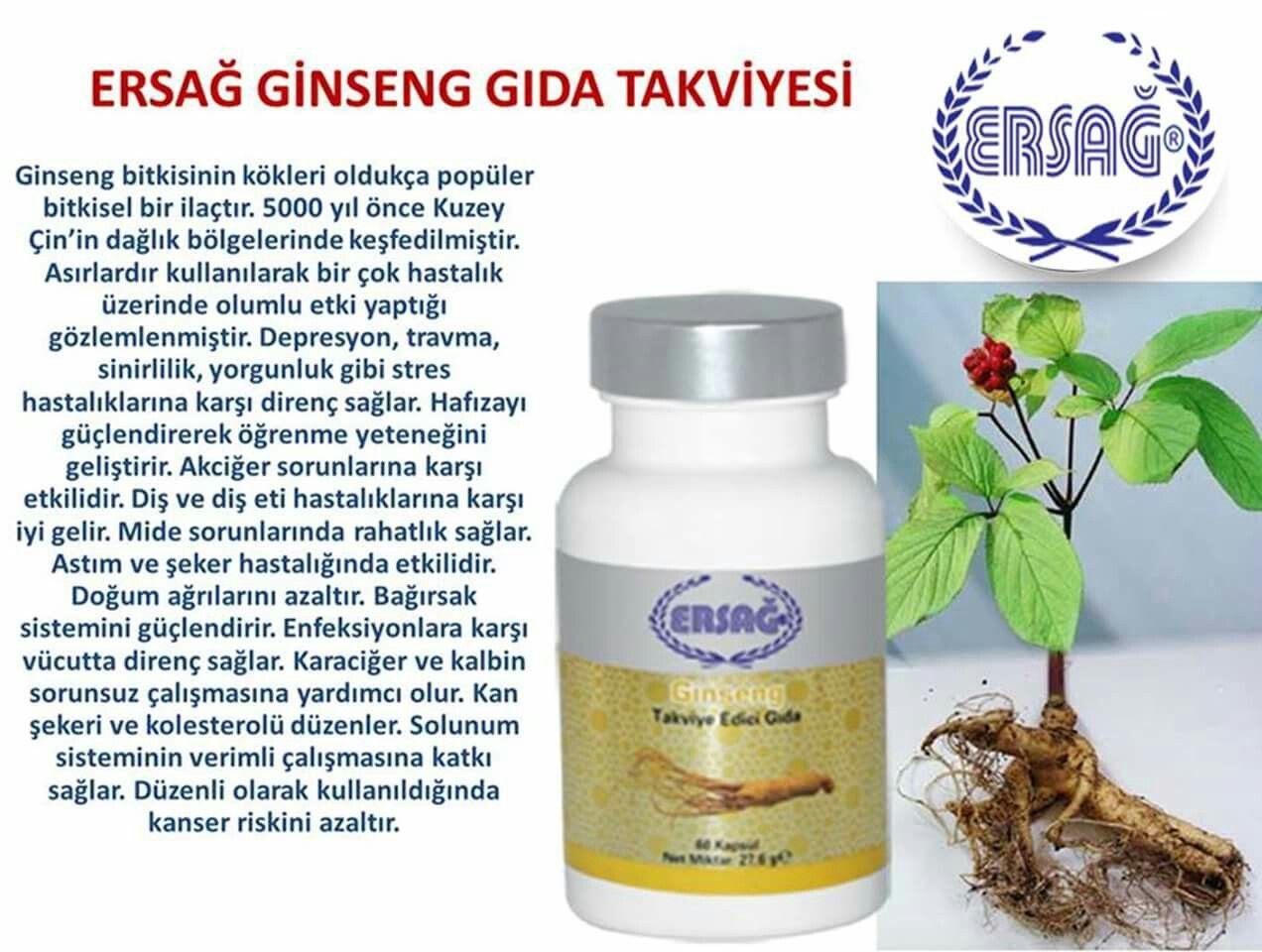
Does Korean Ginseng interact with other drugs you are taking?
Enter your medication into the WebMD interaction checker
Overdose
If someone has overdosed and has serious symptoms such as passing out or trouble breathing, call 911. Otherwise, call a poison control center right away. US residents can call their local poison control center at 1-800-222-1222. Canada residents can call a provincial poison control center.
Keep all medical and lab appointments.
Different types and quality of ginseng may have different effects. Read the product label carefully and ask your doctor or pharmacist for more information.
If you miss a dose, take it as soon as you remember. If it is near the time of the next dose, skip the missed dose. Take your next dose at the regular time. Do not double the dose to catch up.
Refer to storage information printed on the package. If you have any questions about storage, ask your pharmacist. Keep all medications and herbal products away from children and pets.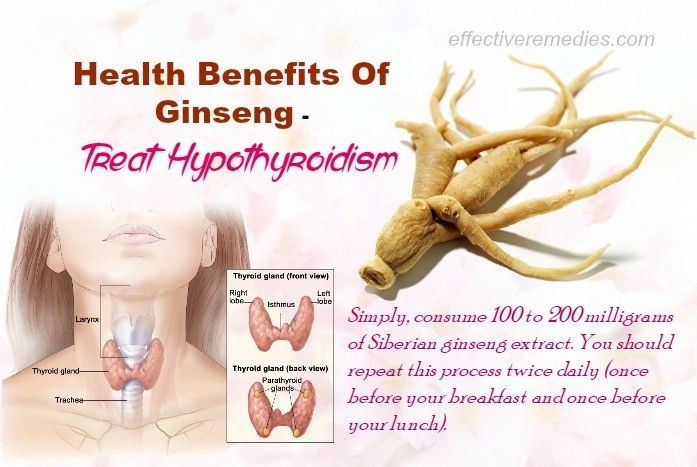
Do not flush medications down the toilet or pour them into a drain unless instructed to do so. Properly discard this product when it is expired or no longer needed. Consult your pharmacist or local waste disposal company.
Look up another drug
Selected from data included with permission and copyrighted by First Databank, Inc. This copyrighted material has been downloaded from a licensed data provider and is not for distribution, except as may be authorized by the applicable terms of use.
CONDITIONS OF USE: The information in this database is intended to supplement, not substitute for, the expertise and judgment of healthcare professionals. The information is not intended to cover all possible uses, directions, precautions, drug interactions or adverse effects, nor should it be construed to indicate that use of a particular drug is safe, appropriate or effective for you or anyone else. A healthcare professional should be consulted before taking any drug, changing any diet or commencing or discontinuing any course of treatment.
Useful properties of Ginseng and contraindications
“May the wisdom of this root abide in your every day.”
Jean-Jacques Rousseau
Useful properties of ginseng
Real ginseng is widely used in traditional Korean and Chinese medicine. The use of ginseng root is described in numerous ancient treatises. In Asian countries, it has been successfully used to treat various diseases for the past 9 years.0018 several thousand years .
Many ancient Chinese texts say that Korean ginseng has seven effects on the human body:
1. Po increases endurance and stamina , improves physical condition, relieves fatigue.
2. Improves metabolism , functions of the cardiovascular system, improves the course of all processes in the body.
3. Stabilizes the mental state , prevents stress, neuroses and nervous disorders.
4. Cleanses the body of toxins (detoxification), removes poisons and toxins from the body.
5. Prevents diseases of the gastrointestinal tract.
6. Normalizes the functions of the respiratory organs , prevents their diseases.
7. Rejuvenating effect, improves skin condition and overall health.
Why is ginseng useful?
Scientific research on ginseng
Many scientists in all corners of the globe were interested in the question of why ginseng is useful and what exactly is its power. By ak it turned out that the indications for the use of ginseng described in ancient medical treatises coincide with the recommendations of modern medicine based on scientific data.
“Root of Life”, like most traditional medicines, entered medical practice much earlier than it was studied by scientists.
The unique properties of ginseng have been scientifically confirmed and substantiated. Today in the world there are about 5000 publications of scientific studies ginseng, clinical and preclinical trials. Every year this number continues to grow.
Scientifically proven ginseng
| Stimulant | Ginseng increases physical and mental activity. It has proven itself to be a safe, effective, natural stimulant that is as powerful as caffeine and amphetamines. However, it has a mild effect and therefore does not cause excessive stimulation. |
| Immunostimulator | Thanks to ginseng, the work of all body systems is normalized, especially its protective function. Ginseng boosts immunity. It is recommended by doctors in the autumn-winter period for the prevention of colds. Ginseng boosts immunity. It is recommended by doctors in the autumn-winter period for the prevention of colds. |
| Tonic | The traditional oriental concept of ginseng is a long-acting tonic. In countries where doctors are paid when a patient recovers, ginseng is present in almost every natural preparation with immune-boosting properties. |
| General strengthening action | Research scientists have shown that ginseng improves the general condition of patients. Doctors recommend it to people of all ages to eliminate stress, improve mood and sleep. |
| Antistress | Ginseng helps the body adapt to all types of stress. |
| Cardiovascular system | Clinical studies have shown that ginseng improves circulation and reduces platelet aggregation. Chinese nutritionists recommend including ginseng in the diet of people suffering from cardiovascular diseases. |
| Blood sugar | Clinical studies have shown the normalizing effect of ginseng on blood sugar levels. Doctors recommend using it as an integral part of a healthy diabetes diet. |
| Antioxidant | To date, many studies have shown that red ginseng has strong antioxidant properties. This makes ginseng indispensable in the prevention of many diseases caused by exposure to free radicals. |
| Sexual health | Ginseng improves a person’s general health, as well as physical and sexual activity. However, it cannot be considered as an aphrodisiac. |
| Longevity | The effects of ginseng are cumulative. With regular use, ginseng not only has a beneficial effect on health and tone, but also promotes longevity. |
| Anticancer activity | A large number of researchers, studying the properties of ginseng, found that it is able to reduce the size of tumors. |
Researches of recent years reveal more and more useful properties of ginseng.
Recovery process and side effects
Ginseng is generally suitable and approved for use by all people, regardless of gender and age.
However, people vary greatly in body type and health, and may report improvements in bodily functions as well as side effects (such as an allergic reaction), which are extremely rare.
Allergic reactions to ginseng are extremely rare. If an allergy occurs, it is enough to stop taking ginseng and all symptoms will quickly pass.
Application and drug interactions
No adverse events have been observed in pregnant women taking Korean ginseng. However, at the same time, studies of the effect of ginseng on pregnant and breastfeeding have not been conducted, so it is better to refrain from taking ginseng during these periods of time.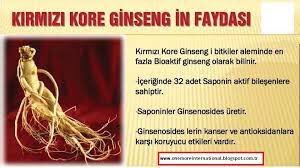
Red Korean ginseng improves blood circulation and the activity of the cardiovascular system in general, it usually does not cause an increase in blood pressure . However, people with severe hypertension should use ginseng starting at half a single dose and observe changes in pressure.
Ginseng can lower blood sugar levels . That is why people using hypoglycemic drugs should consult a doctor before using ginseng, due to the possible increase in the hypoglycemic effect.
Ginseng is not recommended for acute infectious diseases, epilepsy, increased bleeding .
🌿 Ginseng for men and women: properties and side effects
Every person felt the signs of stress: insomnia, irritability, fatigue and an increased tendency to chronic diseases. This is where adaptogens come to the rescue – relatively safe herbal preparations, one of which is ginseng. What is he capable of and what evidence can be useful?
Updated: 000Z”> 23.06.2022
- Benefits of ginseng: effect on energy, mind, flu, sugar and potency
- Side effects
- Format and dosage of ginseng 902 57
- Drug interactions and risks: pay attention
Ginseng is a well-known adaptogen, a herbaceous perennial that can reach a height of 80 cm and grow for over 100 years. In the wild, it is almost never found, but for medicinal and cosmetic purposes it is grown on special plantations, and the quality of the crop is qualitatively controlled. So what is ginseng for and what effects does it have on health and well-being guaranteed?
Benefits of ginseng: effect on energy, mind, flu, sugar and potency
Western scientists and medical professionals doubt the medicinal properties of ginseng, as there is still no conclusive evidence of its true effectiveness.
But there are suggestions that ginseng may have an impact on health and well-being. Let’s take a look at which ones.
Let’s take a look at which ones.
Increasing energy and efficiency
Taking ginseng for general vigor and vigor is common among athletes, students before exams and those who have to get involved in work as much as possible in the near future. At least that’s the kind of advice you can get from these groups.
Ginseng can help to stimulate the physical and mental activity of people who feel weak and tired, and in principle to deal with chronic fatigue for a while.
And a 2014 study finds it as a new way to get rid of cancer-related fatigue. However, this effect has only been documented in people who were currently undergoing actual treatment. It showed no statistically significant improvement in people who had already completed cancer treatment.
Clear cognitive function
The fact that ginseng stimulates thought processes and cognition is true. The 2018 report speaks to the correctness of this statement.
These studies have shown that ginseng reduces oxidative stress, a process that can lead to improved cognitive function.
A 2016 study on the effects of Asian red ginseng on cognition in patients with Alzheimer’s disease also showed promising results.
The study involved 14 people, three men and 11 women, with an average age of 74.93 years. Patients received 4.5 grams of Korean red ginseng for 12 weeks. In the end, it all came down to the conclusion that Asian Red Ginseng helps improve the function of the frontal lobes of the brain.
Treatment of erectile dysfunction in men
It is common among men that ginseng has a beneficial effect on men’s health problems.
A 2012 study of 119 men with mild to moderate erectile dysfunction did indeed confirm that ginseng berry extract improves overall sexual function. This study lasted 8 weeks, during which some participants in the group received an extract of Asian ginseng berries, while others received a placebo.
But in order to talk about the reliability and longevity of such treatment, it is necessary to conduct an additional, longer and larger-scale study of this issue.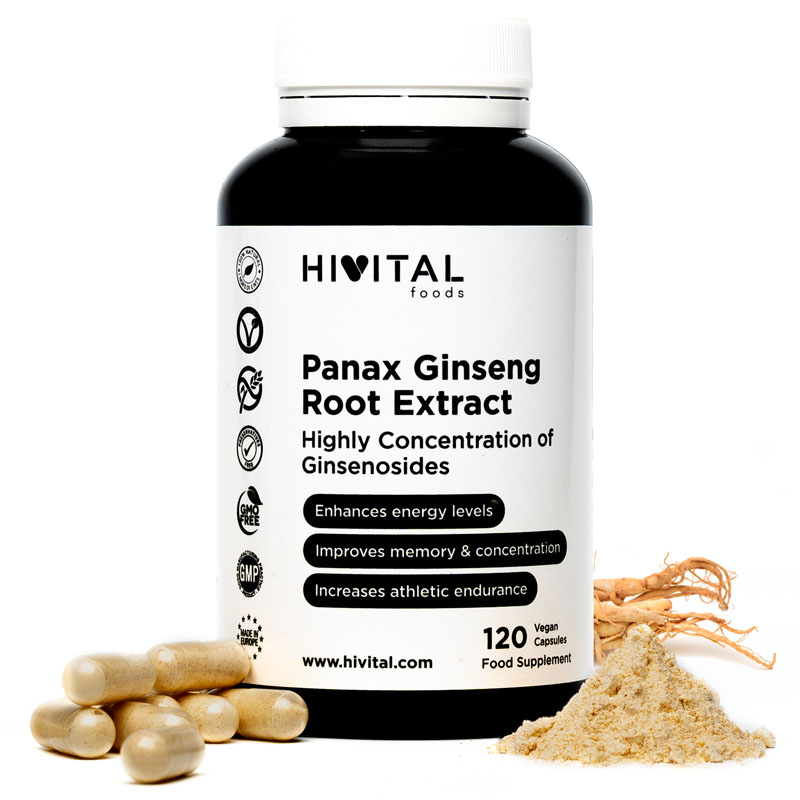
Influenza Prevention
Study results suggest that red ginseng extract can improve the survival of human lung epithelial cells infected with influenza virus.
But even here it is not exactly established how exactly the antiviral mechanisms in ginseng work.
Lower blood sugar
A 2014 analysis suggests that ginseng may help lower blood sugar and be helpful in managing diabetes. Ginsenosides may interfere with insulin production in the pancreas and increase insulin resistance.
And here is a picture of another study conducted in the same 2014. Some participants took 2.7 grams of fermented red ginseng each day, while others received a placebo. The result was the conclusion that ginseng actually lowered blood glucose and increased post-meal insulin levels compared to placebo.
True, more clinical research and standardization of the root of this herbal substance is needed to determine whether ginseng is a possible complementary therapy for diabetes. You also need to find out what specific doses can be effective.
You also need to find out what specific doses can be effective.
2 reviews
Doppelherz Active Ginseng + B-vitamins + Zinc cap …
200.4 UAH
Available 4 UAH
In stock
1 review
Ginseng tincture, 50 ml – Vishfa
66.7 UAH
In stock
1 review 0 Side effects
Although ginseng is generally safe to consume, but people’s reviews still report side effects. These are the most common:
- headaches;
- sleep problems;
- digestive problems;
- changes in blood pressure and, of course, blood sugar;
- diarrhea;
- rapid heartbeat;
- sudden skin reaction.
Format and dosage of ginseng
You can take 1-2 grams of ginseng root 3 or 4 times a day. But the maximum use of it is permissible no more than 3-4 weeks.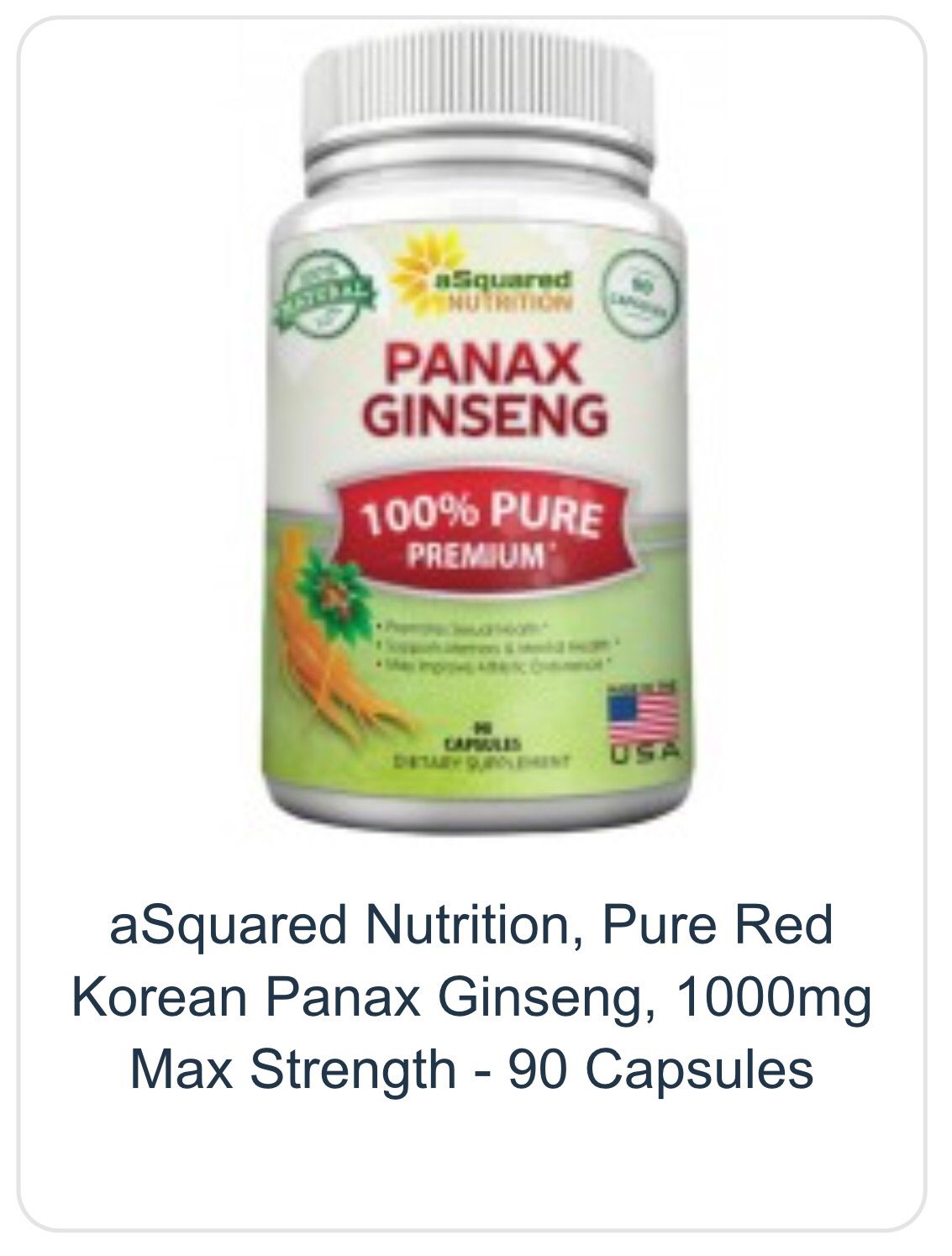
As for its forms, it is usually available as tea, tincture, drops, dried herbs, powder or capsules.
Drug Interactions and Risks: Attention
Because ginseng can alter the effects of blood pressure, diabetes, and heart medications, including calcium channel blockers such as nifedipine, be careful!
Important ! Never take ginseng and heart medication at the same time without first consulting your doctor!
Root can also increase the risk of bleeding when taking anticoagulants such as warfarin and aspirin.
Women who are pregnant or breastfeeding should absolutely not take ginseng supplements. The same applies to children.
Although researchers have not confirmed the various potential health benefits of ginseng supplementation, it is generally safe for humans to take this herb in small doses. As an additive in rare cases, yes, but definitely not as a stand-alone treatment.
Today, all supplements, including ginseng tinctures, are available for purchase online. This makes it possible to quickly compare manufacturers, study reviews, descriptions. But always check with your doctor before trying or starting anything new.
The COVID-19 pandemic has created widespread anxiety and, as a result, many people have trouble sleeping. This is enough to have a negative impact on the immune system and a person’s ability to resist viruses and infections. Find out if melatonin, the well-known sleep pill, can help you get in shape and fight this fight against the virus.
Why do some people feel the onset of old age already at 30, while others exude energy even at 50? Is it all about psychology or does each individual have their own starting point, after which the aging process starts? Read in our article why body aging occurs and when real age-related changes begin.
Learn more about health at apteka24.ua.
This editorial has been reviewed for accuracy by a cardiologist at Medical Plaza Medical Center – Victoria Alexandrovna Kutova .
Sources
Ginseng / Drugs.com
Asian Ginseng / NIH
Antifatigue effects of Panax ginseng C.A. Meyer: a randomised, double-blind, placebo-controlled trial / PubMed
PURLs: Finally, a way to relieve cancer-related fatigue / NCBI
Active ginseng components in cognitive impairment: Therapeutic potential and prospects for delivery and clinical study / NCBI
Effect of Korean Red Ginseng on Cognitive Function and Quantitative EEG in Patients with Alzheimer’s Disease: A Preliminary Study / The Journal of Alternative and Complementary Medicine
Effects of Korean ginseng berry extract on sexual function in men with erectile dysfunction: a multicenter, placebo-controlled, double-blind clinical study / IJIR
A placebo-controlled trial of Korean red ginseng extract for preventing Influenza-like illness in healthy adults / NCBI
Ginseng For Cancer Patients Says Mayo Clinic / MedicalNewsToday
Disclaimer
your doctor! Self-medication may not be safe for your health.

 Acta Pharmacol Sin. 2008;29(9):1109–18.
Acta Pharmacol Sin. 2008;29(9):1109–18.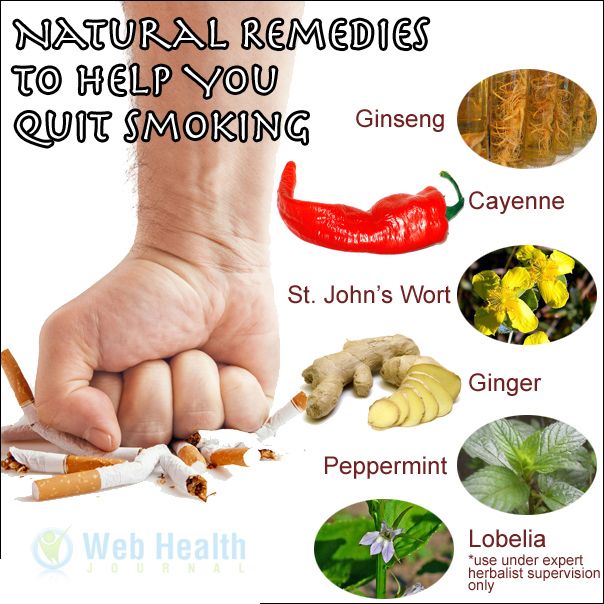 A case of korean ginseng-induced anaphylaxis confirmed by open oral challenge and basophil activation test. Allergy Asthma Immunol Res. 2012;4(2):110–1.
A case of korean ginseng-induced anaphylaxis confirmed by open oral challenge and basophil activation test. Allergy Asthma Immunol Res. 2012;4(2):110–1.